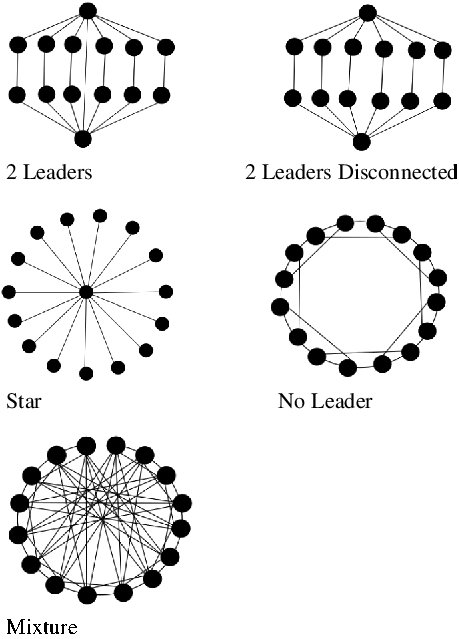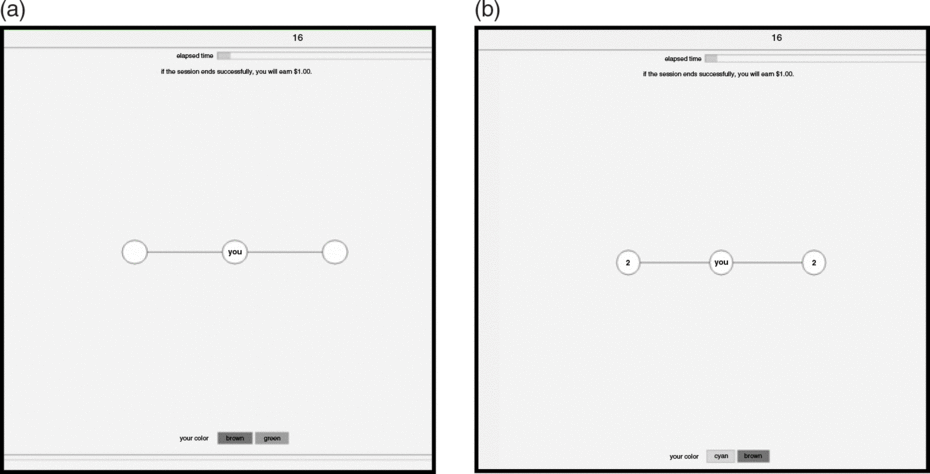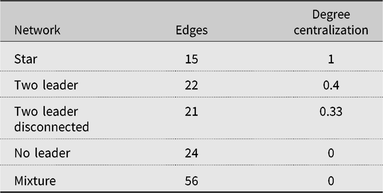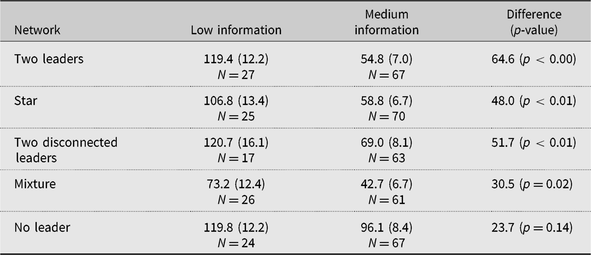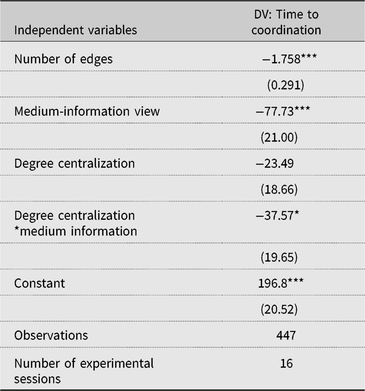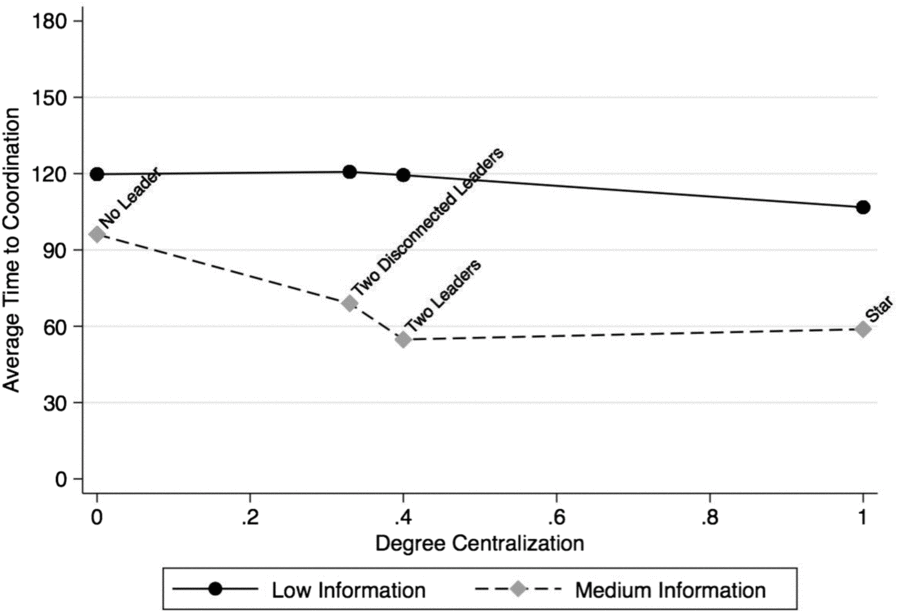Networks, Knowledge, and Coordination
Coordination is ubiquitous in politics.Footnote 1 Whether it involves voters selecting a candidate, individuals deciding to protest, legislators selecting a policy from many possibilities, or firms and countries adopting international standards, politics regularly involves situations requiring the adoption of a coordinated solution from among multiple options. In this paper, we use laboratory experiments to show that network structure (the connections that allow communication between individuals)Footnote 2 and network knowledge (the information that those in the network have about the structure) affect coordination and that highly connected nodes improve coordination, but only if network knowledge allows individuals to identify their existence. These results tell us both about how communication can affect behavior and suggest the importance of paying attention to network knowledge and its effect on behavior.
Political Protest: a Stylized Example of Coordination and Communication
Consider a stylized example in which citizens want to coordinate a protest and participation requires taking a costly action. In this context, communication can help coordination (Chong Reference Chong1991, Reference Chong1993; Chwe Reference Chwe1998, Reference Chwe1999; Siegel Reference Siegel2009). For example, Lynch (Reference Lynch2011) argues that “Secure and cheap tools of communication lower transaction costs for the organization of collective action, with social media in particular allowing like-minded members to find one another and to make their true beliefs known in a semi-public setting” (p. 304). Chong (Reference Chong1993) argues “one of the most effective ways that Solidarity leaders in Poland transmitted information was to provide foreign radio networks with details about their strike activities, which would then be broadcast in news reports throughout the country” (Chong Reference Chong1993, p. 135). In both examples, communication is public, and this common knowledge (everyone knows about the communication and everyone knows that everyone else knows and so on) creates expectations about others’ actions that help coordinate a protest because “communication is not just about distributing a message; it is also about what the people involved know about others’ knowledge” (Chwe Reference Chwe1998, p. 50). One factor that contributes to common knowledge is the information people possess about communication structure (who talks to whom), because this information helps people form expectations about the other people who observed the communication and therefore what other people know.
We use experiments to advance our understanding of how communication structure (modeled as a network) and network knowledge affect resolving a coordination problem (such as a political protest).
Coordination, Communication Networks, and Network Knowledge
Communication is understood to help coordination, but less is known about how the structure of communication affects coordination. We also study network knowledge, which is rarely considered explicitly but is a contributor to shared expectations. Individuals have incomplete but varied knowledge of their networks (Freeman Reference Freeman1992; Krackhardt Reference Krackhardt1987; Simpson, Markovsky, and Steketee Reference Simpson, Markovsky and Steketee2011),Footnote 3 and theoretical models suggest that network knowledge affects behavior (Larson Reference Kranton, Bramoulle, Bramoulle, Gaelotti and Rogers2016).
We focus on the interaction between communication structure and network knowledge to build on prior research that makes a related point (Enemark, McCubbins, and Weller Reference Enemark, McCubbins and Weller2014). In their experiments, they focus on a setting in which actions are costless (which rarely, if ever, exists in real settings such as a protest) and in which edges are added to networks at random. We advance their research by making two crucial changes related to real-world coordination such as a political protest. First, subjects in our experiments must take a costly action to achieve coordination, as in a political protest, which better captures real-world behavior. Second, we design networks that intentionally differ in the number of connections and the presence of highly connected nodes. These differences provide us with a better ability to examine the relationship between structure and knowledge. We have three predictions related to these two factors.
Prediction 1 – Network knowledge:
Increases in network knowledge will decrease coordination time.
Explanation: Knowledge about others’ connections provides information about what others in the network know (moving closer to common knowledge), which facilitates coordination.
Prediction 2 – Number of edges:
Increasing the number of edges will decrease coordination time.
Explanation: Edges provide information about others’ choices, which decreases the time to coordinate.
Prediction 3 – Network Knowledge and Network Structure:
If network knowledge makes it possible to identify the presence of nodes that have relatively more connections than others, then the presence of such nodes in the network will reduce coordination time.
Explanation: Network knowledge can make it possible to know that the network contains highly connected nodes that are able to observe the actions of many and are also observed by many others. If the presence of highly connected nodes is known to those in the network, then their structural position can serve as a focal point to other nodes (Choi et al. Reference Choi, Gale, Kariv and Palfrey2011) and facilitate common knowledge about others’ actions (Chwe Reference Chwe1998).
Without sufficient network knowledge to know about highly connected nodes, players cannot condition their actions on their presence. In our experiment (described in more detail later), we manipulate network knowledge to two different levels: low – individuals can observe those to whom they are connected but do not know anything else about their connections; or medium – adds information about each connection’s total number of connections (i.e., each node’s degree).Footnote 4 The medium-information condition allows individuals to identify if there are highly connected nodes, whereas the low-information condition does not. Providing information about nodal degree does not change who observes a node’s action; it only changes what people know about the nodes they observe.
Experimental Design
We designed an experiment to modify both network structure and network knowledge.Footnote 5 We present an overview here and more complete information can be found in the supplemental materials. Sixteen undergraduate students were recruited from across campus and informed when to arrive at a computer lab.Footnote 6 Upon arrival, they sat behind computer terminals separated by study carrels. Instructions were read aloud to students, who also completed a pen-and-paper quiz to ensure they understood the task and the rules of the experiment. We paid subjects for correct quiz answers and corrected mistakes to ensure understanding.
Subjects were told that there were 16 participants and that each trial would last at most 3 min. During each trial subjects choose a color for their node with the overall goal of all nodes selecting the same color at the same time, which stops the trials and each subject earns $1 minus costs incurred from choosing a color(s).Footnote 7 If the 180-s time limit is reached before successful coordination, then subjects do not earn money for that trial but do pay any costs from selecting a color. The task is a dynamic coordination problem that subjects complete via the computer interface in Figure 2.Footnote 8 At the beginning of a trial, the nodes are not assigned a color, but once the trial starts subjects can choose a color for their node and can see the choices of nodes to which they are connected. We conducted multiple trials during a session; subjects were paid their total earnings at the end of the experiment and earned an average of $18.Footnote 9
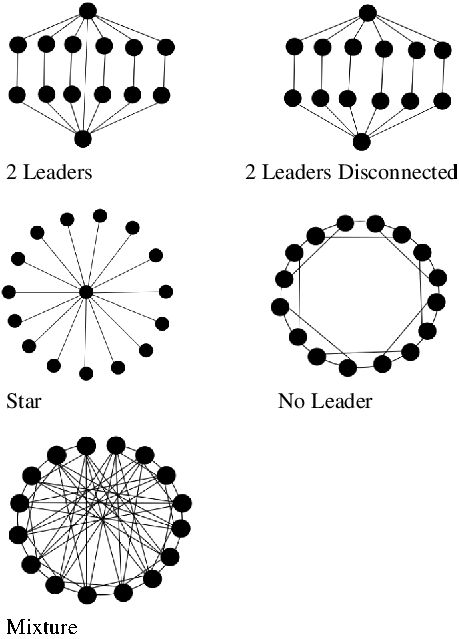
Figure 1 Networks used in coordination experiments.
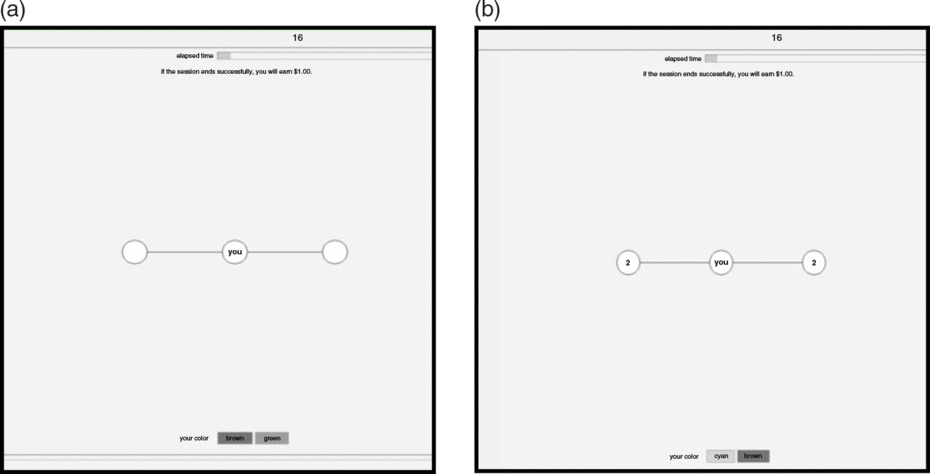
Figure 2 (a) Low- and (b) medium-information views.
We implemented several features to reduce learning during a session. The orders of the networks were determined prior to the experiment and are therefore independent of performance during a session. Subjects are randomly assigned to a node position for each trial. For each trial, the computer program picks two random colors for the coordination task. Subjects only see the nodes to which they are connected, and subjects participated in either a low-information or medium-information experiment to avoid spillover across conditions.Footnote 10
Choice of Network and Knowledge Treatments
The five networks we used are shown in Figure 1; as shown in Table 1, they vary in both the total number of edges and the presence of highly connected nodes as measured by degree centralization. The total number of edges in a network has been shown to affect behavior even if subjects only know about their immediate neighborhood.Footnote 11 Degree centralization is a network measure of inequality in nodal degree (i.e., number of connections per node) relative to a star network with the same number of total nodes. Values closer to one mean the network is more unequal in the concentration of connections, and values closer to zero mean the network is more equal in degree concentration (Hanneman and Riddle Reference Hanneman and Riddle2005). We study one feature that affects behavior across information conditions (edges) and another that affects behavior only in the medium-information condition (degree centralization).
Table 1 Network statistics
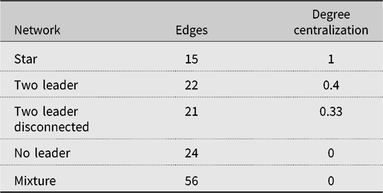
Figure 2a replicates a screen shot from the “Low-Information” condition. Subjects can observe only their connections. The screenshot in Figure 2b is the “Medium-Information” condition and it provides subjects with the ability to observe connected nodes and the number of connections that each of those nodes has (represented by a number in the center of the circle). This information is sufficient to determine if a node is highly connected relative to other visible nodes and to size of the network.
To understand the interaction between knowledge and structure, consider the Star Network from Figure 1.Footnote 12 In the low-information condition each noncentral node sees the single central node but cannot tell that this node can observe all other nodes. In the medium-information condition each noncentral node is still connected to the center and now can tell that this node is connected to all 15 other nodes and each node knows that the other nodes have this information. The change in information view creates common knowledge about the highly connected node, and subjects can then use this structural feature to facilitate decisions in the coordination task.
Results
We report on 447 experimental trials from 16 sessions. Each experimental trial is stopped at 3 min if coordination did not occur and such trials have a truncated value of 180 s in our data. Consistent with Prediction 1, there is a relationship between network knowledge and coordination time. Across the different networks, the average time to coordinate in the 119 low-information trials is 106.9 s and in the 328 medium-information trials the average is 64.6 (two-tailed t-test, p < 0.001).Footnote 13 A statistically significant decrease in coordination time occurs in four of the five networks as shown in Table 2. The change in network knowledge is quite minimal but has a considerable effect on outcomes. This result is consistent with prior research demonstrating that more network knowledge facilitates coordination.Footnote 14
Table 2 Average coordination time by information view
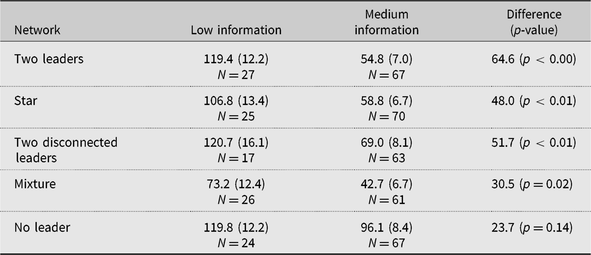
Table 3 Network structure, knowledge, and coordination time
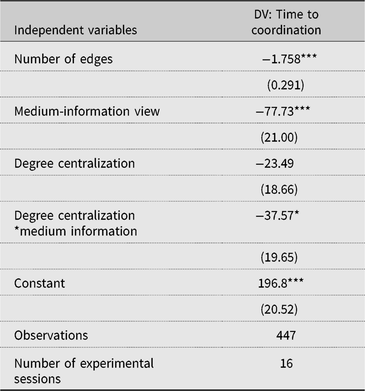
Notes: Standard errors in parentheses. *** p < 0.01 and * p < 0.1.
94 observations right-censored at 180 s. Regression includes coefficients for experimental session and trial number.
The smallest p-values in Table 2 are associated with the three networks that have structural features revealed by the presence of information about degree, suggesting that network knowledge interacts with structure. In Figure 3, we plot the average coordination time for the No Leader, Two Disconnected Leaders, Two Leaders and Star networks for the low-information and medium-information conditions.Footnote 15 In the low-information condition increases in degree centralization do not appear to affect coordination time, whereas in the medium-information condition degree centralization decreases coordination time.Footnote 16 This provides preliminary evidence regarding the expected interaction between network structure and knowledge.
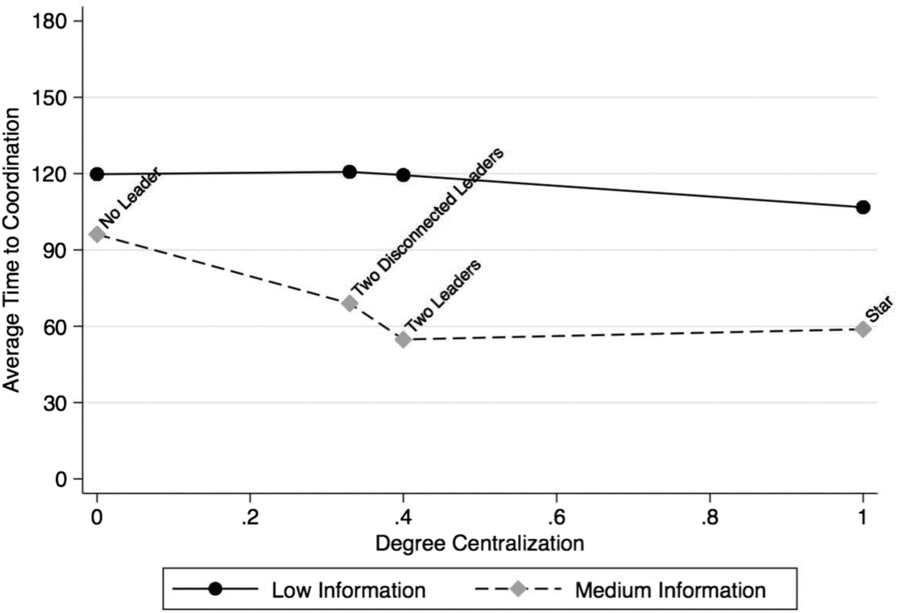
Figure 3 Network structure, knowledge, and coordination time.
To estimate the effect of edges, network structure, and network knowledge on coordination time, we estimate a Tobit regression to account for the right-censoring of the data at 180 s. Our regression includes the key treatment variables: number of edges, degree centralization, network knowledge, and the interaction between knowledge and degree centralization. We also include a dummy variable for each experimental session to account for possible group-level idiosyncrasies, and we include a count variable for the order of each trial in an experimental session.
As explained earlier, we expect that the number of edges will be related to coordination time regardless of information condition, the medium-information view will decrease coordination time, and degree centralization will only be related to coordination time in the medium-information view.
The results in Table 3 demonstrate that both the number of edges in a network and the medium-information view reduce coordination time, as expected. We also find support for Prediction 3 about the interaction between degree centralization and network knowledge. Degree centralization is unrelated to coordination time in the low-information condition as indicated by the Degree Centralization coefficient. However, in the medium-information condition degree centralization reduces coordination time; the total effect of degree centralization in medium information depends on both the main effect of degree centralization and the interaction, and an F-test indicates that the total effect is significantly different than zero (p < 0.0001) providing strong evidence that degree centralization reduces coordination time in the medium-information condition.Footnote 17
We conducted more trials in the medium-information condition than the low-information condition, because on average trials take longer in the low-information condition and therefore it is possible that degree variance is significant in the medium-information condition and not in the low-information condition because of the number of observations. To test this, we restricted our analysis to all 119 low-information trials and the 126 medium-information trials that were among the first 12 trials per session. We again find that that degree variance is significantly related to coordination in the medium-information condition but not the low-information condition.Footnote 18
A further illustrative comparison regarding structure and knowledge comes from the No Leader and Star network. The two networks have essentially equal number of edges, but are maximally different in degree centralization. In the low-information condition, the Star network is solved on average in about 106 s and the No Leader network in about 120 s, which are quite similar and not statistically different from each other (two-tailed t-test, p = 0.48). In the medium-information condition the Star network is solved on average in about 59 s while the No Leader network is solved in about 96 s, a difference that is statistically different (p < 0.001). In the No Leader network average coordination time does not vary across information conditions (p = 0.14, two-tailed test) but does vary significantly for the Star network (p < 0.001, two-tailed t-test). The decline in coordination time between information conditions is much greater in the Star network than the No Leader network, as expected from the interaction between network structure and knowledge.
Conclusion
In this paper, we study how communication and network knowledge affect coordination, such as the ability to engage in political protest. We demonstrate that both the structure of information and network knowledge can affect coordination. We also show that highly connected nodes can facilitate coordination but only when network knowledge allows individuals to recognize the presence of such nodes. This implies that information does not just passively spread through the network, but that individuals use knowledge of the network to guide their behavior.
Our experimental results have important implications for the study of networks. The crucial role that network knowledge can play in behavior suggests that it is important to consider the design of the network and what individuals know about the network. For example, simply adding a central node to a network may not change behavior unless its existence is recognized, but this relationship between structure and knowledge has not been well identified previously. The results also indicate the importance of incorporating network knowledge in to theories about the effects of networks and being cognizant of assumptions we make about network knowledge. Our reading of the related literature is that scholars often make unstated (or implicit) assumptions or ignore network knowledge when considering the effects of structural features on behavior. For example, in a recent paper Bisbee and Larson (Reference Bisbee and Larson2017) demonstrate that the nature of relationships is quite similar in online and offline social networks and argue that therefore we can test social science theories using online social network data and expect the results to apply to offline social networks. However, if network knowledge differs across online and offline networks, and if knowledge matters as our experiments suggest, then generalization from online to offline networks may not be so straightforward. In the context of political protests this may imply that online and offline networks can affect behavior differently, even if their structure is quite similar. Similarly, Klar and Shmargad (Reference Klar and Shmargad2017) show that opinion spread and learning depend on network structure, but since learning requires meeting the conditions for persuasion (Lupia and McCubbins Reference Lynch1998) it is likely that learning in a network depends on knowledge of those in the network. In both of these examples, the authors do not consider whether network knowledge might affect their conclusions, and while we do not claim that network knowledge must matter in these domains our results suggest it can be quite important and therefore scholars should consider its relevance.
A relevant point to consider is the generalizability of these results beyond our experiments. The theories on which we build relate to communication, network structure, and knowledge of structure, and our experiments use an environment where the change in network knowledge creates common knowledge of structure and is therefore an appropriate test of our predictions. These theoretical factors do not directly depend on the size of the network, and therefore these factors may matter even with much larger numbers of people than in our experiments. However, the interaction between network structure and knowledge depends on common knowledge about the nodes in the network, and in a larger network learning about the presence and the actions of the highly connected nodes in one’s neighborhood may not provide enough information to facilitate coordination. Generalizations about the interaction between structure and knowledge depend on creating common knowledge about communication structure, which allows individuals to use this information in the coordination task. Therefore, an interaction between structure and knowledge can still exist in very large networks if individuals know they are connected to highly connected nodes and can use this information to guide their decisions. For instance, returning to the protest example the ability of an individual (or a media source) to help coordinate a protest will depend, in part, on whether others are aware that this person is highly connected to others and if this communication structure is common knowledge so that everyone is aware of the connections to others. In the prior examples about the role of social media and broadcast television in coordinating protests, the public nature of the communication was important, because it meant that everyone knew that everyone else knew about the protest and could act accordingly. On the contrary, if a social media account or broadcast television does not meet the conditions for common knowledge, then it is unlikely that even these highly connected sources would facilitate coordination, because individuals would not know who else had viewed the messages and therefore that others would also protest. Generalizability of these experimental results depends on whether in a particular situation common knowledge of structure matters for behavior and if it is reasonable to assume that individuals have common knowledge of the communication structure.
Our experimental results demonstrate that network knowledge matters for some tasks, and that it can interact with network structure to affect behavior. Given the growing importance of network theories in political science (Nicoll Victor, Montgomery, and Lubell Reference Nicoll Victor, Montgomery and Lubell2016), it is important to be more explicit about the assumptions regarding network knowledge and consider how changes in these assumptions might affect our behavioral expectations.
Supplementary Material
To view supplementary material for this article, please visit https://doi.org/10.1017/XPS.2019.10.


